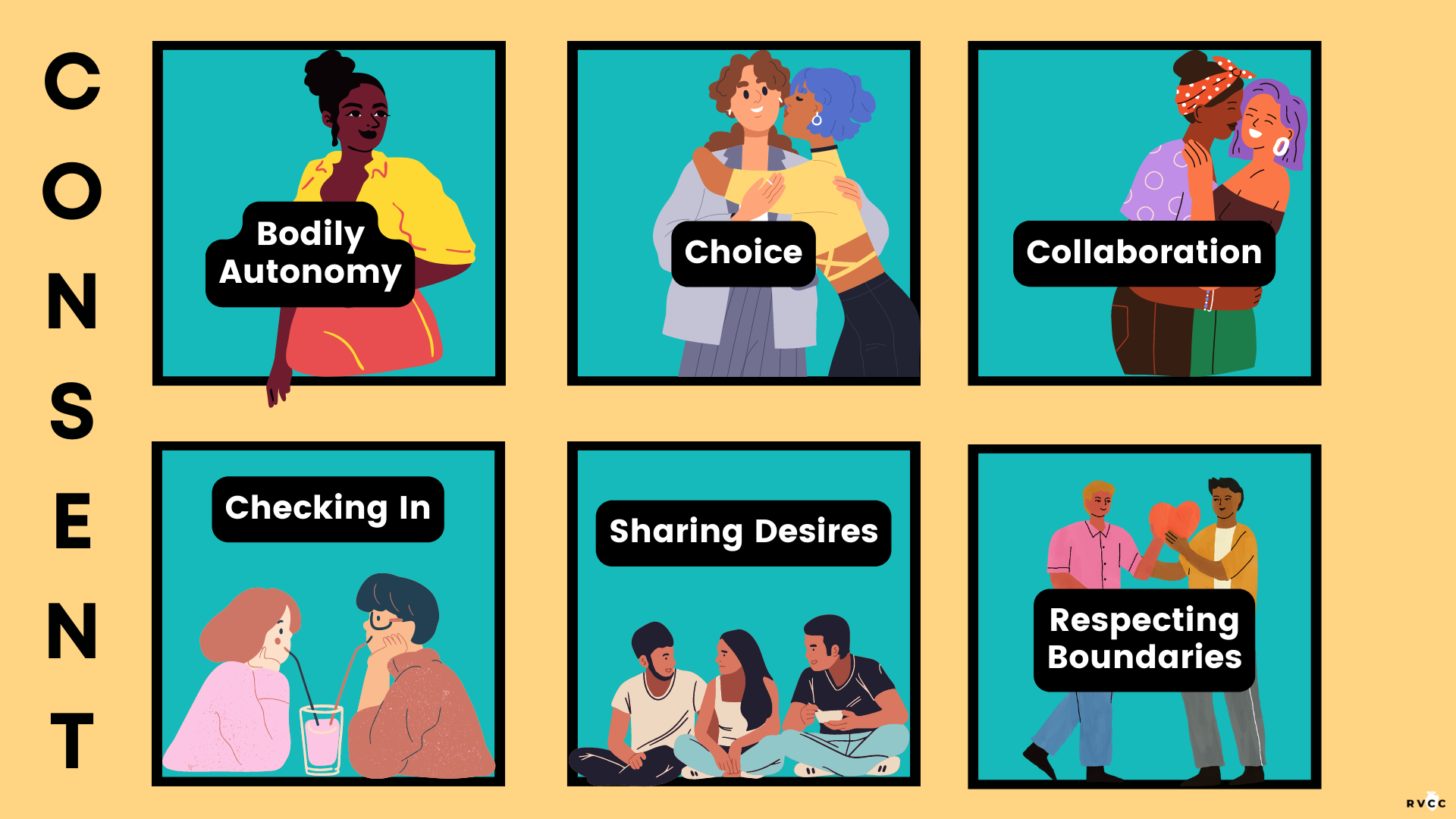Sexual Violence Prevention and Victim Services (SVPVS)
Program Overview
The Sexual Violence Prevention and Victim Services Program (SVPVS) implements prevention efforts that reduce risk factors and increase protective factors associated with sexual violence perpetration and victimization. SVPVS DOES NOT take reports. Please follow the resources below if you have know of or have experienced sexual violence and wish to report. This page provides limited information about domestic and sexual violence. Please follow the links in the resource section to learn more. There are five core focus areas of SVPVS:
- Promote social norms that protect against violence
Social norm campaigns (e.g. posters, social media postings, and tabling events) are conducted to encourage positive behavioral intentions and attitudes regarding bystander intervention and affirmative consent. In addition, bystander intervention trainings are offered to students, staff, faculty, and coaches.
Examples of bystander intervention trainings:
- Teach skills to prevent sexual violence
Evidence-informed curriculums are implemented in middle schools and high schools to teach skills that help prevent sexual violence. Some of these skills include: social-emotional learning, healthy relationship skills, promoting healthy sexuality, and empowerment-based trainings.
- Provide opportunities to empower and support girls and women
Financial literacy classes are provided to youth in high schools and institutes of higher education. These classes help economically vulnerable groups become empowered and self-sufficient. Some of the class sessions focus on economic independence and safety. This provides women with the skills and knowledge needed to promote financial independence, which can help them avoid abusive partners. Workshops will also be offered to provide women with the confidence, knowledge, and skills necessary to negotiate compensation and benefits. Help educate institutions on policies and legislation that support gender equity and set an example by addressing these within the state government.
- Create protective environments
To help create protective environments, there are several evaluation tactics that can implemented like: hot spot mapping, windshield surveys, policy review, and campus climate surveys. The data that comes back from these is used to modify community structures, social norms, community environment and policies. All these changes work to create a safe, healthy, and protective environment.
- Support victims/survivors to lessen harms
Resources are provided to mothers who were victims of sexual and domestic violence during pregnancy or one year prior to becoming pregnant. Some of these services include: case management, housing assistance, accompaniment services, educational grants, and child care. These services help improve the life-outcomes for both the mother and child and stop the circle of violence from impacting the future of their children.
To assist Montana in ending sexual violence, the state receives Rape Prevention Education (RPE) funds from the Centers for Disease Prevention and Control. The SVPVS program also receives funds from the Preventive Health and Human Services Block Grant. All these funds are distributed to subrecipients at the state, county, and local levels.
Sexual violence refers to sexual activity that occurs when consent is not obtained or freely given from both parties who are involved. It happens in every state but can be prevented through a variety of prevention measures that focus on increasing protective factors and decreasing risk factors. This can be done at the individual, relationship, community, and societal level.
Protective factors can eliminate risk in individuals, families and communities by increasing their health and well-being.
Examples of protective factors include:
- Nonviolent problem-solving skills (individual)
- Empathy (individual)
- Connection to a caring adult (relationships)
- Connection/commitment to school (relationships)
- Teaching healthy masculinity (community)
- Coordination of services among community (community)
Risk factors, on the other hand, can increase risk in individuals, families, and communities by decreasing their health and well-being.
Examples of risk factors include:
- Violent problem-solving skills (individual)
- Empathetic deficits (individual)
- No connection to a caring adult (relationships)
- Association with sexually aggressive, hypermasculine, or delinquent peers (relationships)
- Societal norms that support sexual violence (community)
- Cultural norms that support aggression (community)
- Societal norms that support male superiority and sexual entitlement; maintain women’s inferiority and sexual submissiveness (community)
Sexual violence is a sex act—completed or attempted—against a victim's will or when a victim is unable to consent due to age, illness, disability, or the influence of alcohol or other drugs. It may involve actual or threatened physical force, use of guns or other weapons, coercion, intimidation or pressure. Sexual violence also includes intentional touching of the genitals, anus, groin, or breast against a victim's will or when a victim is unable to consent.
Sexual violence can be verbal, visual, or anything that forces a person to join in unwanted sexual contact or attention. Examples of this are voyeurism (when someone watches private sexual acts), exhibitionism (when someone exposes him/herself in public), and incest (sexual contact between family members). There are several different forms of sexual violence including: sexual harassment, sexual abuse, and sexual assault.
Sexual harassment is defined as any unwelcome verbal and physical sexual attention. Some examples of sexual harassment include: unwanted touching, sexual advances, requests for sexual favors, verbal harassment of a sexual nature, exposing oneself, and unwanted sexually explicit digital communication (i.e. photos, emails, texts). This type of harassment typically occurs in the workplace or a learning environment and is directed towards an individual or group of people.
Sexual abuse is sexual activity that occurs without consent and involves a breach of trust. This kind of abuse repeats itself or occurs over a long period of time. One example of sexual abuse is between a minor and an adult. By Montana law, minors cannot consent to sexual activity before the age of 16, so any sexual activity that occurs (e.g. fondling, forced masturbation, producing pornographic images of children, intercourse) is illegal.
Sexual assault is any sexual contact or behavior that occurs without explicit consent of the victim. It includes all attempted or completed acts. Some of forms of sexual assault are: fondling, sexual touching, forced oral or anal sex, incest, child molestation, rape and more. Unlike sexual abuse, this type of assault usually occurs only one time by an individual or group of perpetrators.
Rape is defined as the penetration of the vagina or anus with any body part or object, or oral penetration by another person’s sex organ, without the victim’s consent. It is a common form of sexual assault and can be committed in a variety of situations: on a date, by a friend or an acquaintance, or by a stranger. Often rape involves impairment of the victim by alcohol or “date rape” drugs which can be slipped into a drink when a victim is not looking. Attackers use date rape drugs to make a person unable to resist assault. These drugs can also cause memory loss, so the victim doesn’t know what happened.
Rape and sexual assault are never the victim’s fault — no matter where or how it happens.
Stalking is another behavior of concern that is directed towards an individual and causes them to be fearful. This behavior is often a pattern of repeated and unwanted attention, harassment, non-consensual communication, and other conducts (e.g. making threats, following someone, watching them from a distance). It is one method of exercising power and control over another person.
(Adapted from https://www.rainn.org/ and http://www.womenshealth.gov/.)
Domestic violence is another form of abuse where one partner uses a behavior pattern to maintain power and control in an intimate relationship. In this case, the abusive partner may physically harm (e.g. punch, slap, kick), emotionally abuse (e.g. insult, blame), arouse fear in (e.g. threats and intimidation), restrict the freedom of (e.g. economic deprivation) or force desired behaviors on their partner (e.g. sexual abuse and coercion). It can occur in past or present relationships between dating partners, spouses, and family members.
(Adapted from http://mcadsv.com/.)
One form of physical abuse that is often seen in these cases is strangulation. Strangulation occurs when one partner blocks the air passageways of their partner or family member. In 2017, Montana wrote strangulation into the law as a felony (MT Legislation). Research has shown that murder may be the next step after strangulation, so this crime must be taken seriously.
Affirmative consent occurs by continual, enthusiastic “yes” by all partners engaging in sexual activity. The continual part of this definition means that any partner can stop or change their mind at any time during sexual activity. In addition, just because someone said yes to one sexual act, that does not mean they have consented to other sexual acts. The other essential part of this definition is enthusiasm. All partners engaging in sexual activity must be as excited and into someone else’s enjoyment as much as they are excited and into their own enjoyment.

Legal consent cannot be given if a participant is:
- Under the influence of drugs and/or alcohol
- Being threatened, coerced, or manipulated
- Not mentally able to due to an illness or disability
- Not old enough to give legal consent (this varies by state, in Montana the legal age of consent is 16)
When a participant gives consent, they must understand what is going on, know what they want to do, have the choice to say yes or no, and be aware that they are giving consent. Their consent does not count towards future sexual activity. It can be withdrawn at any time, and all sexual activity must stop once consent has been withdrawn by a participant. Any sexual contact without consent, or that continues after consent has been withdrawn, is sexual assault or rape.
(Adapted from http://www.womenshealth.gov).
One important thing to be aware of is that the definitions for and laws that prohibit sexual assault, sexual abuse, sexual harassment, and rape differ from state to state. The following link can be used to find Montana’s state laws regarding sexual violence and consent, as well as other states: https://apps.rainn.org/policy/.
Montana participates in ongoing efforts to ensure education and training regarding problems related to domestic violence, sexual violence of all kinds, statutory rape and teenage pregnancy. These efforts include shared resources and information available from partner agencies and departments within the state and local communities.
Montana, despite its rural status, is not immune to sexual or domestic violence. Rape is acknowledged as one of the most under-reported crimes, so most experts see the numbers below as conservative estimates.
- Nationwide, 81% of women and 43% of men reported experiencing some form of sexual harassment and/or assault in their lifetime.3
- About one in four male victims of completed or attempted rape first experienced it between the ages of 11 and 17.
- 2023, 13.6% of students reported during the past 12 months being forced to do sexual things that they did not want to do? (Count such things as kissing, touching, or being physically forced to have sexual intercourse.).1
- The prevalence of false reporting for sexual assault crimes is low — between two percent and 10 percent.2
Contact:
Patrick Paradis
Program Specialist
(406) 444-3628
Patrick.Paradis@mt.gov

